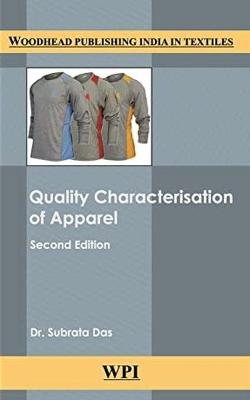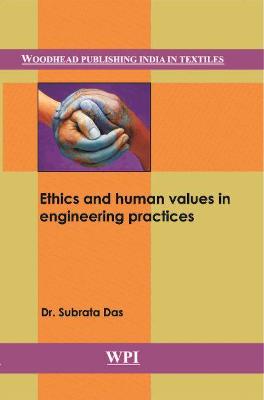Woodhead Publishing India in Textiles
3 total works
This book provides an overview of the types of fibres used in home textiles and the key issues relating to product development, industry standards, regulatory aspects, and evaluation systems. An understanding of these topics can assist the designer or manufacturer in developing product performance and quality in line with the value addition and to maintain the basic concept underlying in green consumerism. The books emphasis is on how to achieve the commercial success of the desired end product through knowledge of the key markets producing various home textiles, scope of development through sustainable and eco-friendly fibres, evaluation systems and above all safety aspects and environmental regulations.
Quality characterisation of apparel entails dimensional and colour fastness properties, durability and surface appearance of apparels along with mandatory regulation on flammability, fibre composition and care labels. Safety issues for different accessories in children garment and safety review of typical garments have been thoroughly covered in this book.
In this second edition, a new chapter has been introduced on characterisation of varieties of washed denim fabrics. Quality characterisation of different finished leather and performance requirements of different leather and suede garments have also been added to the second edition of the book for a wider coverage of the area of quality characterisation of apparels.
The novelty of this book is the way the topics are arranged on actual practical way in which apparel manufacturing units, buying offices and retailers are facing day-to-day challenges in different activities in their business. This will help the apparel business community to avoid quality related surprises and cut down rejections. The book would be of immense use for textile/ garment manufacturers, buying offices, retailers and the educational cluster of apparel/fashion.
In this second edition, a new chapter has been introduced on characterisation of varieties of washed denim fabrics. Quality characterisation of different finished leather and performance requirements of different leather and suede garments have also been added to the second edition of the book for a wider coverage of the area of quality characterisation of apparels.
The novelty of this book is the way the topics are arranged on actual practical way in which apparel manufacturing units, buying offices and retailers are facing day-to-day challenges in different activities in their business. This will help the apparel business community to avoid quality related surprises and cut down rejections. The book would be of immense use for textile/ garment manufacturers, buying offices, retailers and the educational cluster of apparel/fashion.
Professional engineers must have ethics to make decisions which should be self-reliant and autonomous. They should be morally committed and equipped to tackle ethical dilemmas they face and to hold paramount the safety, Health, and welfare of the public. Actions of an engineer must be like a true professional.
Engineering ethics is more than mere knowledge and skills, and that the final goal of engineering ethics is to foster qualities and abilities that enable engineers to make self - reliant/autonomous decisions and actions as professionals. The objective of this book is to introduce the readers to the ethical concepts lead to resolving moral issues in engineering, understanding of ethics and responsibility of engineers as professionals, ability to make ethical judgments and solve problems, attitude required and values shared by engineers to interface social, technological and natural environments.
Engineering ethics is more than mere knowledge and skills, and that the final goal of engineering ethics is to foster qualities and abilities that enable engineers to make self - reliant/autonomous decisions and actions as professionals. The objective of this book is to introduce the readers to the ethical concepts lead to resolving moral issues in engineering, understanding of ethics and responsibility of engineers as professionals, ability to make ethical judgments and solve problems, attitude required and values shared by engineers to interface social, technological and natural environments.


